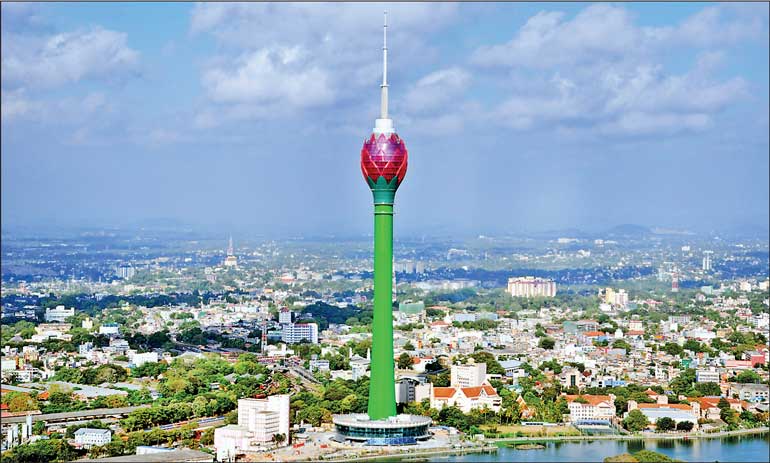Monday Dec 01, 2025
Monday Dec 01, 2025
Tuesday, 8 October 2024 00:10 - - {{hitsCtrl.values.hits}}

Civil & Structural Engineering Consultants Managing Director/Principal Structural Engineer Shiromal Fernando

Shiromal Fernando explains how high performance paints not only beautify but also preserve the structural integrity of modern buildings.
Amid Colombo’s rapidly evolving skyline, maintaining the longevity and appeal of modern buildings has become increasingly critical. For structural engineers like Shiromal Fernando, the challenge goes beyond aesthetics—it’s about safeguarding buildings against harsh weather conditions and ensuring their durability over time. As a Principal Structural Engineer at Civil & Structural Engineering Consultants Ltd., Fernando has contributed to some of the tallest developments in Sri Lanka. In this interview, he shares his expert insights on the essential qualities required for exterior finishes to protect and preserve the structural integrity of these towering landmarks.
Q: What key factors do you consider when planning and executing a construction project?
A: In every project, site feasibility is the first priority—understanding the location’s soil and environmental conditions is essential. Budgeting is equally important, ensuring high-quality materials like waterproofing agents and durable paints are included. The entire process, from selecting the right colour and finish to applying the correct paint, makes a big difference in preventing future complications from weather damage. When it comes to long-term protection, the right exterior coatings can reduce the frequency of maintenance and ensure the building remains visually appealing and structurally sound for years.
Q: How do exterior finishes enhance the value and longevity of a building?
A: Exterior finishes act as the first line of defence against external elements, ensuring not only aesthetic appeal but also long-term protection for the structures. They protect the structures from weathering, moisture absorption, and temperature changes. While a building’s aesthetic appeal is important the long-term durability provided by an exterior paint is even more crucial.
High quality paints not only enhance beauty but also provide essential protection from environmental damage. Poor quality paints may fade, crack, or peel, requiring frequent repairs, which can be costly. Additionally, paints today offer waterproofing properties, shielding buildings from moisture infiltration that can lead to structural damage over time.
Q: Can you discuss the structural impacts of water absorption and how the right exterior paint mitigates these risks?
A: Water absorption is a serious concern. If water seeps through, it can cause mould growth, peeling paint, and structural cracks. Over time, this weakens the foundation, however, using waterproofing paints prevents moisture from reaching the building’s core by protecting it from deterioration. Modern paints come with warranties, offering peace of mind that the structure will remain protected for years. They act like a lamination, shielding buildings from rain, dust, and sun while maintaining their new look.
Q: How do Sri Lanka’s unique weather conditions influence your choice of exterior finishes?
A: Sri Lanka’s tropical climate presents distinct challenges. High humidity, monsoons, and salt-laden coastal winds require finishes that are extremely water-resistant and durable. These coatings must also be anti-fungal to combat mould, a common issue in humid areas. Selecting the right exterior finish is crucial to ensuring a building’s longevity, especially under these extreme conditions.
Q: Have recent advancements in exterior paint finishes revolutionised building maintenance?
A: Absolutely. New coatings offer superior water resistance, UV protection, and algal resistance, and some even have self-cleaning properties. These finishes repel dirt and dust, keeping buildings looking fresh for years with minimal maintenance. Self-priming waterproof paints also reduce the number of coats required, making the balance between aesthetics and practicality easier to achieve. Many now come with warranties, further solidifying their value.
Q: For landmark projects like skyscrapers, how do you balance aesthetics with practical needs? Can you share a success story?
A: It’s always about finding the right balance. While aesthetics play a critical role in the building’s visual impact, practicality cannot be overlooked. We work closely with architects and designers to select finishes that are visually appealing yet still meet the performance criteria. This usually involves choosing materials that can enhance the architectural design but are durable enough to withstand the rigors of the environment for decades.
The Lotus Tower is a standout example. Its height and exposure to harsh weather meant we needed a paint that could withstand significant environmental stress while remaining flexible enough to accommodate building movements. We selected a high-quality waterproofing exterior paint which ensured quite a high resistance to wear and tear due to its elongation property to withstand Sri Lankan rain. This has helped in significantly reducing cracks and has stopped water absorption into the structure. It’s a compelling testament to the fact that investing in premium coatings is worthwhile in the long term.
Q: How do you approach the cost-benefit analysis of high-quality versus lower-cost exterior paints?
A: Exterior painting is a long-term investment. While cheaper paints may save money initially, the frequent repairs they require can be far more expensive in the long run. Poor-quality paint can lead to substrate damage, which is costly to repair. High-quality paints, applied professionally, protect the structure for many years and reduce the need for ongoing maintenance. With warranties offered by manufacturers, the benefits far outweigh the upfront cost.
Q: What role do you believe exterior paints play in enhancing a building’s energy efficiency, and what specific paint technologies do you recommend?
A: Exterior paints can significantly impact a building’s energy efficiency. Darker paints tend to absorb more heat, leading to higher cooling costs, while lighter paints with a high Solar Reflectance Index (SRI) reflect sunlight, reducing heat absorption. Some modern paints are also formulated with advanced UV resistance, which helps in maintaining lower indoor temperatures and improving energy efficiency. Choosing the right paint can lead to noticeable savings in energy bills.
Q: What advice do you have for developers and property owners when selecting exterior paints to maximise building value and longevity?
A: My advice is simple: never compromise on quality. While cutting costs might seem appealing, it can lead to expensive problems down the road. I recommend investing in high-quality, weather-resistant paints, particularly in tropical climates where buildings face extreme conditions. Regular maintenance is also key—small repairs now can prevent bigger, costlier issues later. With the right products and care, exterior paints can ensure a building’s structural integrity and aesthetic appeal for decades.
As Sri Lanka’s urban landscape continues to evolve, the expertise of professionals like Shiromal Fernando ensures that its architectural marvels stand the test of time. With the right balance of design, practicality, and innovation, Colombo’s skyline is set to endure both its aesthetic appeal and structural integrity for generations to come.